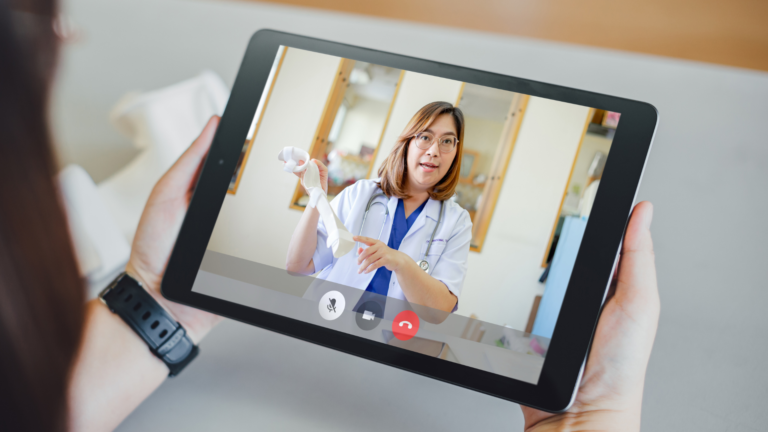- By Write RN
Table of Contents
Healthcare social media strategy is a strategic approach that each healthcare company must utilize to reach their patients. Social networks are “nice-to-have” platforms that people use to stay connected. But for healthcare providers and companies, they are the best medium to promote awareness, engage with patients, answer common questions, and share accurate, evidence-based health information.
It is crucial, now, more than ever, to reach your patients. Social media for healthcare businesses is more than just creating social accounts or posting every day because everybody is doing it. It is not even about putting your contact information for your patients to find you.
So, what does it take for a healthcare social media strategy to be called effective? Let’s tackle each of the important steps and make sure you don’t skip any of these!
Steps to Develop an Effective Healthcare Social Media Strategy
Know Your ‘WHYs’
Creating an effective healthcare social media strategy starts with 3 w’s.
‘Why are you using social media?’
‘What are the objectives and goals that you want to achieve in using social media?’
‘Who is your target audience?’
Pro tip: be SPECIFIC in providing your answers! Click here to let us help you get started with your healthcare social media strategy
Understanding these areas helps uncover your vision and goals in using social media. These questions will identify whether you are ready to use them or not or whether you’re willing to work at it. If you are more comfortable in delegating the social media marketing area of your healthcare business, it will help your social media manager understand your brand and implement the right strategy that fits your business.

Set SMART Goals for your healthcare social media strategy
For a goal to become a reality, it needs to be specific, measurable, attainable, realistic, and time-specific — just put all these together into a simple term: SMART goals.
‘Do you want to reach a broader audience?’
‘Do you want to build your online presence?’
‘Do you want to drive traffic to your website?’
‘Do you want to provide your patients an easy and more accessible platform to book with you?’
Or simply because you have a limited budget and you find social media a more affordable channel to market your products and services?
Understand Your Target Demographic
Doing your research could take time, but it is rewarding. Be specific when gathering information because it will make your decision easier.
‘Who is your typical patient?’
‘How old are they?’
‘What pain points does your product or service solve?’
Another way to determine your target patient is to identify their needs to see if they are interested in your services. Point out all of the different features and qualities of your offering, then think about who would benefit from these features.
Decide What Channels to Use
Being on social media doesn’t mean you have to be everywhere. It is important to select the best social media platforms that will generate the most return on investment and are worthy of your time and effort. It is also a critical step if you have a limited marketing budget and resources. Use the information that you have gathered when identifying your target audience. Know what platforms they use or where patient engagement is primarily active.

Create a Healthcare Social Media Strategy
Your content should align with your audience’s expectations and behavior on each social channel. This step is the most critical part of your healthcare social media strategy because it is where you are going to establish a clear and identifiable voice that you want your audience to identify as ‘you.’ Your content strategy should be based on the following:
Identify the types of content to share on each platform
Take note that each platform works differently from each other. For example, Instagram is more visual-friendly and is mostly used by millennials so infographics and videos are perfect to share. It makes this platform a good option if you’d like to connect with your patients visually. On the other hand, Facebook is best to use if you are sharing news, articles, or any healthcare content. Twitter is suitable for a diverse audience and great to use if you want to participate in real-time conversations.
Identify the times that your patients are active on social media channels.
Of course, you won’t be posting when people are busy at work or in the middle of the night. Generally, you may want to follow these suggested ‘best times to post on social media’ shared by Hootsuite if you are just starting out. Conducting a monthly tracking of metrics will then help you identify the best time to post. Other tools like Planoly offer the ‘best times to post’ feature if you just want to make this process easy for you.
Decide how often to post on social media.
Simply think of the difference between ‘annoying’ and ‘informative.’ You want to provide value to your audience but you don’t want to drive your followers away.
Utilize hashtags
Will you be utilizing hashtags, if let’s say for example, you choose Instagram as a perfect channel for your brand?
Include a call to action
Have a clear and concise call to action. Think of your goals. What do you want them to do after introducing your brand? Do you want to gain more sign-ups? Do you want them to book an appointment? Do you want to increase traffic to your website?
Additional tip: creating a social media calendar will help you visualize your planned posts ahead of time. It will save you a lot of time crafting your content and fuel you with more ideas if you want to keep up with regular postings.
Monitor Your Social Media Metrics Regularly
Crafting your healthcare social media strategy could be daunting during the first stages of running your social media. It is why tracking your social media performance metrics is essential. It will help you identify what’s working and what’s not. It’s like trial and error where you have to determine what needs to be improved or replaced with other strategies that are worthy of your time, effort and budget.
You don’t have to do all of these things alone. A healthcare social media strategy won’t take effect overnight but choosing the right people to handle your social media strategy for you can take overwhelming tasks off your plate. And the key to make the strategy REALLY work? It’s delegating your marketing to a team of healthcare professionals who actually understands how medical marketing works from planning, crafting, and achieving results! Introduce your brand to us by filling-out this form.
Track Your Social Media Analytics with These 5 Tools!
5 Helpful Tools to Track Your Social Media Analytics
1. Avario
Avario is an internet marketing tool designed to help you add value to your brand. This is a great tool designed to track and determine the scalability of your online brand through social media analytics. You can find out more about what people think about your products and services. Awario analyzes content from all over the web as it can view over thirteen billion pages every day.
Not only that, there are a few other things you can do with Awario. You can find new topics for your future guest posts by analyzing the relevant backlinks. Get the most relevant social insights into your brand’s performance by finding social media influencers with this awesome tool.
2. BuzzSumo
BuzzSumo is helpful for brand watch and manages slightly differently from the other tools that track social media analytics on this list. A great part of BuzzSumo is its ability to identify the most popular content on social media including Facebook, Twitter, Pinterest, Reddit, etc.
Using BuzzSumo, you can analyze social media content in several ways. Powerful search options and filtering tools make it easy. Along with influencer data, this tool also provides you with important social backlink data to make an informed decision.
3. Google Analytics
By far, Google Analytics can be viewed as one of the most underrated social media monitoring tools used by most website owners. Many website owners only use this tool to monitor traffic flow, but this tool is designed for more than just monitoring traffic flow.
Google Analytics is not technically a social media tool, but it can still be used to track various social media campaigns and even measure social media ROI. You can create reports specifically for social media analytics tracking, such as how many visitors are directed to your site from which social media channel. You can moreover use UTM parameters to track and metering generic social media campaigns.
4. Keyhole
Keyhole is one of the good social media control tools especially for Twitter and Instagram users. Using this smart tool, you can search for keywords, hashtags, URLs, and usernames to analyze user behavior. You can moreover see both real-time and historical data very accurately.
The special Keyhole heatmap feature allows you to display activity levels in specific parts of the world.
The good part of this amazing social media analytics tool is its ability to query historical data using Twitter and Instagram, which includes information on post count, users, engagement, and influencers.
5. Curalate
Since most brands try their hand at direct selling on social media, you may be thinking the same about your brand. In this case, Curalate may best serve your purpose through Instagram. It will become a hybrid showcase and boost your Instagram sales.
Curalate helps business owners understand which products are getting the most clicks and sales. It will also allow you to track product tags and mentions to analyze the performance of user-generated content across specific social media campaigns.
Do you use any of these tools? If so, are you using them to their potential? If you need more in-depth insights on how tracking social media analytics works, we can help with this at WriteRN. Check out our services.

About the Author
Janine Kelbach, RNC-OB
Janine is a Registered Nurse since 2006, specializing in labor and delivery. She still works at the bedside, as needed. She built Write RN back in 2015 when she started as a freelance writer.
Over the years, and many clients later, she studied marketing, grew her marketing skills, her portfolio (over 200+ pieces), and her business to the agency it is today.




